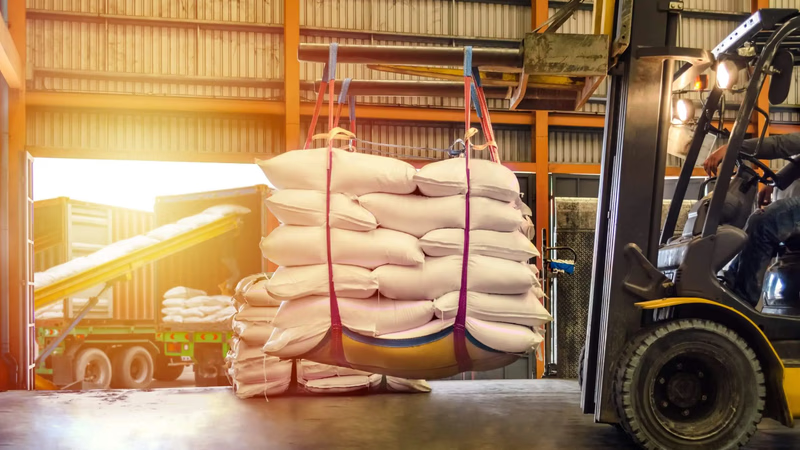
Polypropylene"s versatility drives global trade growth. "
In 1951, Karl Ziegler, a German chemist, discovered a catalyst system that could polymerize olefins under mild conditions. He developed what is known as the Ziegler-Natta catalyst, which allowed for the controlled polymerization of propylene. Ziegler's work laid the foundation for the production of polypropylene on a commercial scale. In 1954, Giulio Natta, an Italian chemist, used Ziegler's catalyst to successfully polymerize propylene and produce a crystalline polymer. The resulting material, polypropylene, exhibited excellent mechanical properties, chemical resistance, and thermal stability. In 1957, Montecatini, an Italian chemical company, began commercial production of polypropylene using Natta's catalyst.
In the 1960s, polypropylene gained popularity due to its unique combination of properties and its ability to be easily processed through various techniques, including injection molding, blow molding, and extrusion. Its versatility and cost-effectiveness led to its adoption in a wide range of applications, including packaging, textiles, automotive components, electrical appliances, and more. Over the years, advancements in catalyst technology and polymerization processes have enabled the production of various polypropylene grades with tailored properties. This has expanded the application possibilities of polypropylene, allowing it to meet specific requirements in different industries.
In recent years, there has been a growing focus on the recycling and sustainability of polypropylene. Recycling technologies have advanced, enabling the reprocessing of post-consumer and post-industrial polypropylene waste. Additionally, efforts are being made to develop bio-based polypropylene derived from renewable resources, reducing the reliance on fossil fuels.
Polypropylene is used to make a variety of plastic parts in various industries. Figure 1 shows the global demand for plastics by resin type and, as can be seen, is the second most widely used polymer in the world. Polypropylene was commercially marketed in 1957, about two-thirds of the world's propylene is used to make this polymer. Types of polypropylene: Polypropylenes are marketed in both homo-polymers and copolymers in order to achieve a variety of applications.
Researchers are exploring the incorporation of nanomaterials like graphene, MXene, nano-clay, borophane, and silver nanoparticles with PP to enhance its properties for advanced applications. These developments aim to improve PP's UV resistance, bonding capabilities, and reduce its flammability. There is a focus on developing high melt strength variants of PP for use in foamed compounds. These are tailored to have long chain branching, which gives them mechanical strength and elasticity. Borealis, SABIC, and Braskem are key players in this technology, developing grades of PP that exhibit a broad foaming range process window.
The use of 4th generation catalysts, such as Reactor Granule Technology, is advancing the development of PP. This includes retailoring post-treatments and polymer/processing machinery developments, like PP stretch-blow molding. Efforts are being made to address the end-of-life challenge of PP by restoring used PP into virgin-like resin. This includes recycled polypropylene featuring modifiers that enhance its properties and make it more sustainable.
The global polypropylene market size is estimated to grow from 91.98 million tons in 2024 to 121.81 million tons by 2029, at a compound annual growth rate (CAGR) of 5.78% during the forecast period. Innovations in production technologies and the development of new polypropylene grades to meet specific industry needs are expected to continue. There is an increasing trend towards recycled polypropylene and the development of more sustainable production methods. The demand for polypropylene is expected to rise due to its versatile applications in packaging, automotive, consumer goods, healthcare, and electronics industries. The Asia-Pacific region is anticipated to dominate the market with the largest consumption, driven by countries such as China and India.
-
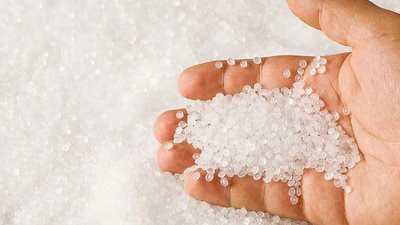
Polypropylene is a versatile thermoplastic polymer derived from propylene, known for its high strength-to-weight ratio, chemical resistance, and thermal stability. It is widely utilized across various industries, including automotive, packaging, and textiles. Its lightweight nature makes it ideal for applications requiring weight reduction, such as automotive parts and packaging materials. Polypropylene"s excellent clarity and impact resistance allow it to be molded into diverse shapes for containers and films. In textiles, polypropylene fibers are used to create durable non-woven fabrics and carpets due to their abrasion resistance and moisture-wicking properties. The polymerization process of propylene involves the Ziegler-Natta catalyst, resulting in an isotactic polymer with high crystallization potential. Polypropylene"s resistance to solvents, bases, and acids enhances its suitability for containers and pipes in aggressive environments. Its low moisture absorption compared to other polymers makes it advantageous for various applications.
Despite its low melt strength limiting some processing methods like blow molding, polypropylene"s high melting point ensures it retains shape under heat exposure. Additionally, its electrical insulation properties make it valuable in electronic components. "
-
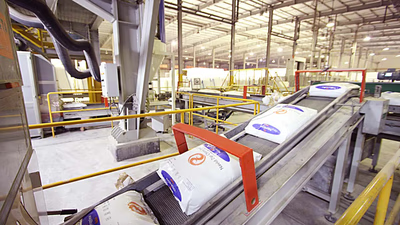
The Middle East is a leading producer of propylene, essential for polypropylene manufacturing, due to its abundant natural gas and petroleum resources. The region"s strategic location facilitates access to major markets in Asia and Europe, enhancing export logistics. Advanced catalysts and technologies have improved production efficiency, allowing for cost-effective polypropylene output. Countries like Saudi Arabia, Qatar, Oman, the UAE, and Iran are key players in this sector, with companies such as Saudi Aramco and Borouge leading production efforts. The growing demand for polypropylene driven by urbanization and industrialization in nearby regions like China and India further boosts capacity expansions in the Middle East. As these nations diversify their economies away from oil dependency, the petrochemical industry becomes increasingly vital. Investments in integrated petrochemical complexes enhance productivity and competitiveness while fostering a business-friendly environment through incentives for domestic and international investors. This strategic focus on petrochemicals positions the Middle East as a significant player in the global polypropylene market. "
-

Karl Ziegler"s discovery of the Ziegler-Natta catalyst in 1951 revolutionized the production of polypropylene, enabling its commercial use by 1957. This polymer is known for its excellent mechanical properties, chemical resistance, and thermal stability, making it suitable for diverse applications such as packaging, textiles, and automotive components. The versatility of polypropylene has led to advancements in production technologies and the development of various grades tailored for specific industry needs. Recent trends emphasize recycling and sustainability, with innovations aimed at reprocessing post-consumer waste and creating bio-based alternatives. The global polypropylene market is projected to grow significantly, with a compound annual growth rate (CAGR) of 5. 78% from 2024 to 2029. The Asia-Pacific region is expected to lead in consumption due to high demand from countries like China and India. As industries continue to seek sustainable solutions, the focus on enhancing polypropylene"s properties through nanomaterials and advanced catalysts will likely shape its future applications.
-
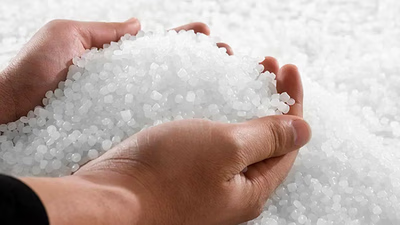
Middle Eastern countries, notably Saudi Arabia, Qatar, the UAE, and Oman, have heavily invested in petrochemical infrastructure, positioning themselves as leaders in global polypropylene production. The region"s abundant and low-cost feedstock from natural gas and crude oil supports large-scale petrochemical complexes. Global polypropylene capacity is projected to grow significantly from 97. 65 million tonnes per annum (mtpa) in 2022 to 159. 35 mtpa by 2027, with a notable number of new projects planned primarily in Asia and the Middle East. Despite regional market challenges such as oversupply in Northeast and Southeast Asia, Middle Eastern producers are expected to maintain production levels to capture market share. Companies like Borouge and SABIC are key players in the UAE and Saudi Arabia respectively, contributing significantly to the region"s output. Oman also plays a role through Orpic"s production facilities.
The competitive landscape includes pressures from European imports and potential supply gluts from China affecting global dynamics. As the Middle East anticipates an increase in polypropylene capacity at an average annual growth rate of 9. 5%, it remains crucial for stakeholders to stay informed through industry reports for accurate insights into this evolving market. "
-
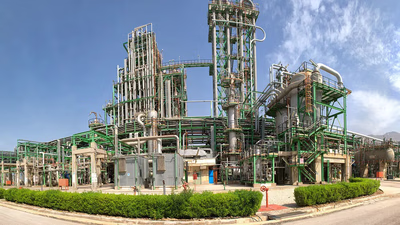
Polypropylene is produced in various grades, each tailored for specific applications based on molecular weight, mechanical properties, and processing methods. High molecular weight grades provide superior strength and toughness, while low molecular weight options enhance flow properties and ease of processing. Key grades include homopolymer PP, known for its high melting point and mechanical strength; random copolymer PP, which improves impact resistance; block copolymer PP, combining stiffness with enhanced clarity; and HMS-PP, designed for improved processability. Polypropylene can also be reinforced with fillers to boost its mechanical properties. Specialty grades are available for unique applications such as flame-retardant or UV-stabilized polypropylene. The choice of grade impacts cost-effectiveness without sacrificing performance, making polypropylene a versatile material across industries like automotive and packaging.
-
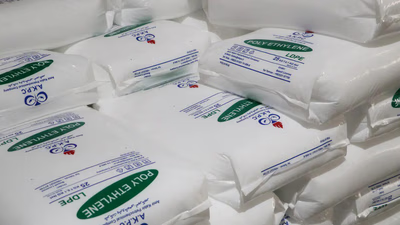
Polypropylene is a versatile polymer used across various industries due to its lightweight, durability, and chemical resistance. It can be molded into different forms such as fibers, films, and complex shapes through processes like injection molding and extrusion. Its high melting point and excellent electrical insulation properties make it suitable for automotive components, packaging materials, and electrical applications. In the automotive sector, polypropylene is utilized for bumpers, interior trim, and fuel systems due to its impact resistance and heat tolerance. The construction industry benefits from polypropylene"s chemical resistance in pipes, fittings, and insulation materials. Additionally, it finds applications in agriculture for greenhouse films and irrigation components. Polypropylene"s cost-effectiveness compared to other engineering plastics has led to its increased use in medical devices and furniture manufacturing. Its unique properties allow for the development of new grades that enhance performance across various applications.






